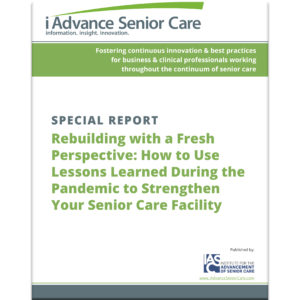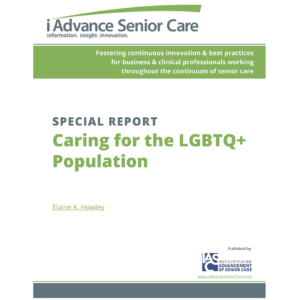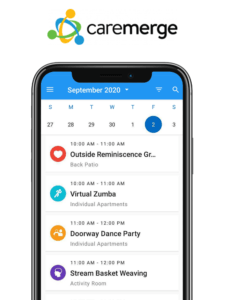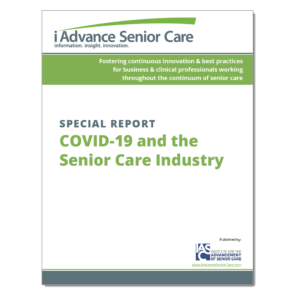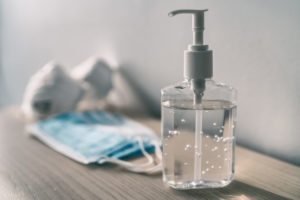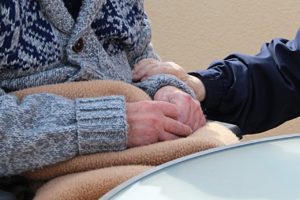Coronavirus preparedness for senior care facilities: The latest scientific recommendations
As of this writing, coronavirus has made its way to every continent (with the exception of Antarctica) and all 50 U.S. states. The illness caused by coronavirus, COVID-19, is particularly devastating for medically vulnerable populations, including the elderly.
As we learn more about this highly contagious virus and its effect on senior care facilities, guidelines for preventing and managing infection are rapidly evolving. This article highlights our current knowledge about the virus and the strategies facilities should implement to protect the at-risk senior population.
Why coronavirus is so deadly for seniors

Dr. Aimee Ferraro, a faculty member of Walden University’s Master of Public Health program
Dr. Aimee Ferraro, a faculty member of Walden University’s Master of Public Health program, has over 20 years of experience in public health and has worked as an ethnographer and epidemiologist on studies related to drug use, HIV, STDs, and Hepatitis C.
According to Dr. Ferraro, the virus spreads through droplets from a sick person’s cough or sneeze, and it can remain on surfaces like plastic and stainless steel for up to three days. It spreads more easily in populations that have frequent contact, such as in a group living situation like a senior care facility.
“The majority of deaths related to COVID-19 have occurred in people over the age of 50,” says Dr. Ferraro. “The death rate appears to increase with age, which is a pattern similar to other infectious diseases like measles, SARS, and MERS. We don’t fully understand why this occurs, but one hypothesis is that older adults have weaker immune systems and are less easily able to fight off severe infection.
“In addition, the death rate is higher among individuals with certain pre-existing conditions (e.g., cardiovascular disease, diabetes and cancer) which are commonly seen among residents of senior care facilities. Senior care facility residents are more vulnerable to COVID-19 because it appears to be more fatal among the elderly and immune-compromised.”
Coronavirus preparedness recommendations for senior care facilities
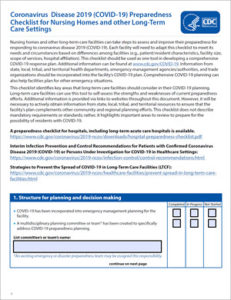
Coronavirus Disease 2019 (COVID-19) Preparedness Checklist for Nursing Homes and other Long-Term Care Settings
The Centers for Disease Control has released a comprehensive preparedness checklist for nursing homes and long-term care facilities.
Dr. Ferraro says, “Preparation begins with development of an appropriate emergency response plan and designated committee to make informed and rapid decisions. Facilities should identify key points of contact, such as the local health department and emergency medical services, and determine a communication plan to inform staff, visitors, family members, and other persons coming to the facility about the status of COVID-19 in the facility.”
She also suggests that facilities provide education and training to both residents and staff on how to prevent the spread of COVID-19. Training should focus on:
- The importance of frequent and washing with soap and water for at least 20 seconds
- Good respiratory hygiene (coughing and sneezing into a tissue or elbow and throwing away used tissues immediately)
Staff should be educated on how to monitor the signs and symptoms of respiratory illness, how to implement proper hygiene and use personal protective equipment (PPE), and the importance of staying home from work if they’re ill.
Dr. Ferraro recommends that facilities develop practices to keep staff safe, too:
- Staff should regularly monitor themselves for fever and respiratory infection.
- Facilities should implement non-punitive and flexible sick leave policies that allow ill healthcare professionals to stay home.
- Facilities should have a plan to address surge capacity, including a contingency staffing plan that identifies minimum staffing needs.
Widespread use of PPE is vital for staff and resident protection
PPE is essential in protecting staff and helping prevent the spread of COVID-19.
Dr. Ferraro suggests that facilities consider having healthcare providers use PPE when caring for all residents, regardless of whether the residents have respiratory symptoms. She suggests the following guidelines for the use of PPE:
- Ensure that supplies and resources are fully stocked, including facemasks, respirators, gowns, gloves, and eye protection.
- Make PPE immediately available outside resident rooms in areas where care is provided.
- Position trash disposal bins near the exit of each room so that it’s easy to discard PPE.
- Make alcohol-based hand sanitizer available in every resident room and in common areas.
- Stock sinks with soap and paper towels.
- Make EPA-registered hospital-grade disinfectants available for frequent cleaning of high-touch surfaces and shared care equipment.
- Provide tissues and facemasks near entrances and in common areas.
The American Health Care Association (AHCA) and National Center for Assisted Living (NCAL) recognize that PPE supplies may be limited and released a memo addressing this.
There is a current worldwide shortage of supplies like N-95 masks and face shields, as well as surgical masks and gowns. The AHCA and NCAL recommend that facilities that expect to exhaust their PPE supplies within three to four days should contact the following organizations:
- Local healthcare coalition
- State health department
- Local health department
- Local hospitals and health care providers
Additional resources
In addition to the resources linked above, the following resources provide comprehensive information and updates on COVID-19:
- The CDC’s Interim Infection Prevention and Control Recommendations for Patients with Suspected or Confirmed Coronavirus Disease 2019 (COVID-19) in Healthcare Settings
- American Health Care Association’s Coronavirus Emergency Preparedness Page
- Centers for Medicare & Medicaid Services Coronavirus Memos

Paige Cerulli is a contributing writer to i Advance Senior Care.
Related Articles
Topics: Administration , Clinical , Executive Leadership , Featured Articles , Infection control , Leadership , Resident Care , Risk Management , Staffing


